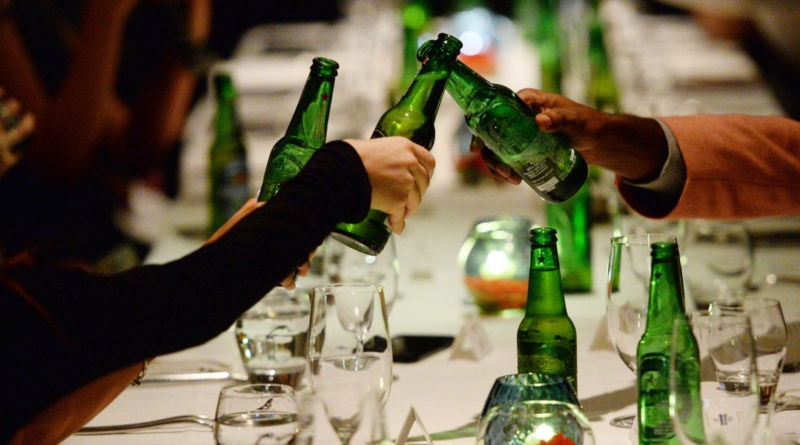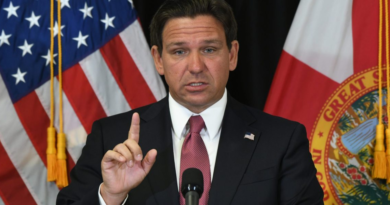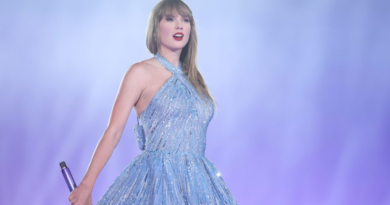It's more than just Dry January—a 'moderation movement' is making winners of brewers in the $22-billion non-alcoholic beer market
Non-alcoholic beer was once at the easily-dismissed bottom rack of the alcohol aisles in stores. Now, it’s cool—ask Gen Z about it.
The category has been fast-expanding as consumers look for healthier options, while not compromising on taste and quality. For a long time, it wasn’t possible to achieve that trinity.
But with brands—big and small, international and local—venturing into the space, drinkers have more choices than ever before.
This growth comes at a time when “regular” beer consumption is experiencing somewhat of a decline. Take the example of historically beer-loving Germany, the home of Oktoberfest. People there have been falling out of love with beer in recent years with a marked decline in consumption—just last year, beer sales fell 4.5%, according to official figures. Germany is now among the top European markets for non-alcoholic beer, data from beverage market research group IWSR reveals.
While that might sound grim for some traditional brewers, it just means that a new product category adjacent to beers is opening up for the alcohol-avoidant crowd. Globally, the non-alcoholic beer market was valued at $22 billion in 2022, and it’s expected to grow a steady 5.5% in the next 10 years, market research group Global Market Insights found.
Moving away from ‘tired and dusty’
With “Dry January” in the rear-view mirror, one thing’s clear—while it’s a great way to get people to consider alcohol-free drink options, opting for such drinks is well beyond a one-month fad. Consider Lucky Saint, Britain’s top brands dedicated to alcohol-free beer, according to market research firm Circana—the company saw a whopping 158% sales growth in the week leading up to Christmas compared to the same period a year ago.
The trend has also caught the attention of the world’s biggest players. Alison Payne, brewing behemoth Heineken’s global marketing director of zero alcohol beverages, has observed over the years that Dry January helps bring more people into the growing market for no-alcohol drinks.
“People who come into Dry January keep some of that moderation habit after January,” Payne told Fortune.
Amsterdam-based Heineken was among the first well-established international brewers to introduce non-alcoholic beer products. Heineken 0.0 first launched in a select few European markets in 2017, and now is available across 110 markets. The brand’s “0.0” products changed non-alcoholic beers from being seen as “tired and dusty” to drinks that are dynamic and innovative, according to Payne.
“It started with a sort of educational piece which is making sure consumers are aware,” she said.
Heineken, world’s second-largest brewer, launched its no alcohol range with the “now you can” campaign, where people were seen driving and making presentations with a Heineken 0.0 bottle in hand to show what opting for non-alcoholic beers can be like.
U.K.-based Lucky Saint’s CEO Luke Boase told Fortune that accessibility has been something the brand has worked hard to achieve and continues to think about. The company has achieved triple-digit growth in 2022 and 2023 following the interest it’s gained.
“The availability piece is something that we’ve massively prioritized as a business and kind of driven hard to get—[to] make sure that this is not just a product that sits at the bottom of a fridge and never gets seen. It’s available on menus…it’s available on draft now,” Boase said.
In an effort to do that, Lucky Saint partnered with pub group Mitchell & Butlers for its “Thou shalt go to the pub” campaign, giving away 10,000 free pints of its non-alcoholic beer to celebrate Dry January. Lucky Saint said it had a record January as more people chose its beers this year, Boase said.
Such campaigns make a big difference in building awareness so people actively consider non-alcoholic beers, Susie Goldspink, the head of no- and low-alcohol insights at IWSR told Fortune.
“The quality of no-alcohol beer has improved markedly in recent years, products taste much better, are more comparable to full strength equivalents and are more widely available with a lot of marketing spend and campaigns driving awareness,” she said. “We are at the stage of category development where the big players are helping to encourage category trial and confidence with their products which is benefitting the smaller independent players too.”
The ‘moderation movement,’ Gen Z and beyond
While people are generally looking to moderate their alcohol consumption, it’s Gen Zs (who will be between 12 and 27 years old in 2024) coming of age who are driving the growth of non-alcoholic beers and reshaping a new era of social drinking, according to Payne.
Moderation, in today’s age, means “a lot of fluidity” in drinking, she said—one example of that is alternating between traditional and non-alcoholic beers on a night out.
Heineken’s non-alcoholic beer market can look very different based on the country—in Spain, for instance, this segment is well-developed and comprises nearly 10% of the overall beer market. The Netherlands is also among the most mature 0.0 markets, Payne said. Heineken’s goal in Europe is to offer more non-alcoholic alternatives for major strategic brands in the region.
The timing is especially ripe now, Payne pointed out, as Gen Zers are more likely to consider replacing their alcoholic drink with a non-alcoholic one.
“Older consumers still have a bit of their old habits, which is that 0.0 beer is for when you’re giving up, whereas Gen Z are much more open to this fluidity in relation to moderation,” Payne said.
Lucky Saint’s Boase echoes the idea that the youngest consumers—belonging to Gen Z—have the highest number of people who choose not to drink at all. But a more likely thread that draws consumers, irrespective of their age, to the Lucky Saint brand is their health consciousness.
“The biggest driver of the category and people coming into the category … is health,” Boase told Fortune, adding that Lucky Saint beers have one-third of the calories than regular beer have. He added that physical as well as mental health reasons were driving people’s need to moderate, but it wasn’t down to one age group to grow the no-alcohol beverage market.
“The moderation movement is affecting all age demographics,” Boase said.
Luring consumers with innovation
With consumers ready to adopt non-alcoholic beverages and companies investing actively in this segment, the next few years will be about normalizing non-alcoholic beer further and getting consumers excited about it.
Heineken’s 0.0 category now offers flavored beers rivaling other carbonated drinks in some markets as a way to offer consumers new experiences.
“We’re also seeing category boundaries blurring. So, we think there’s opportunity in areas like 0.0 beer cocktails … the sort of ready to drink cocktail space,” Payne said.
In the company’s 2023 earnings report, Heineken noted a double-digit growth for non-alcoholic beer and cider in several markets.
“Making sure we can do fantastic draft products is going to be a big focus in 2024 … I think we can continue to offer taste variety—consumers are wanting to discover new things,” Payne said.




